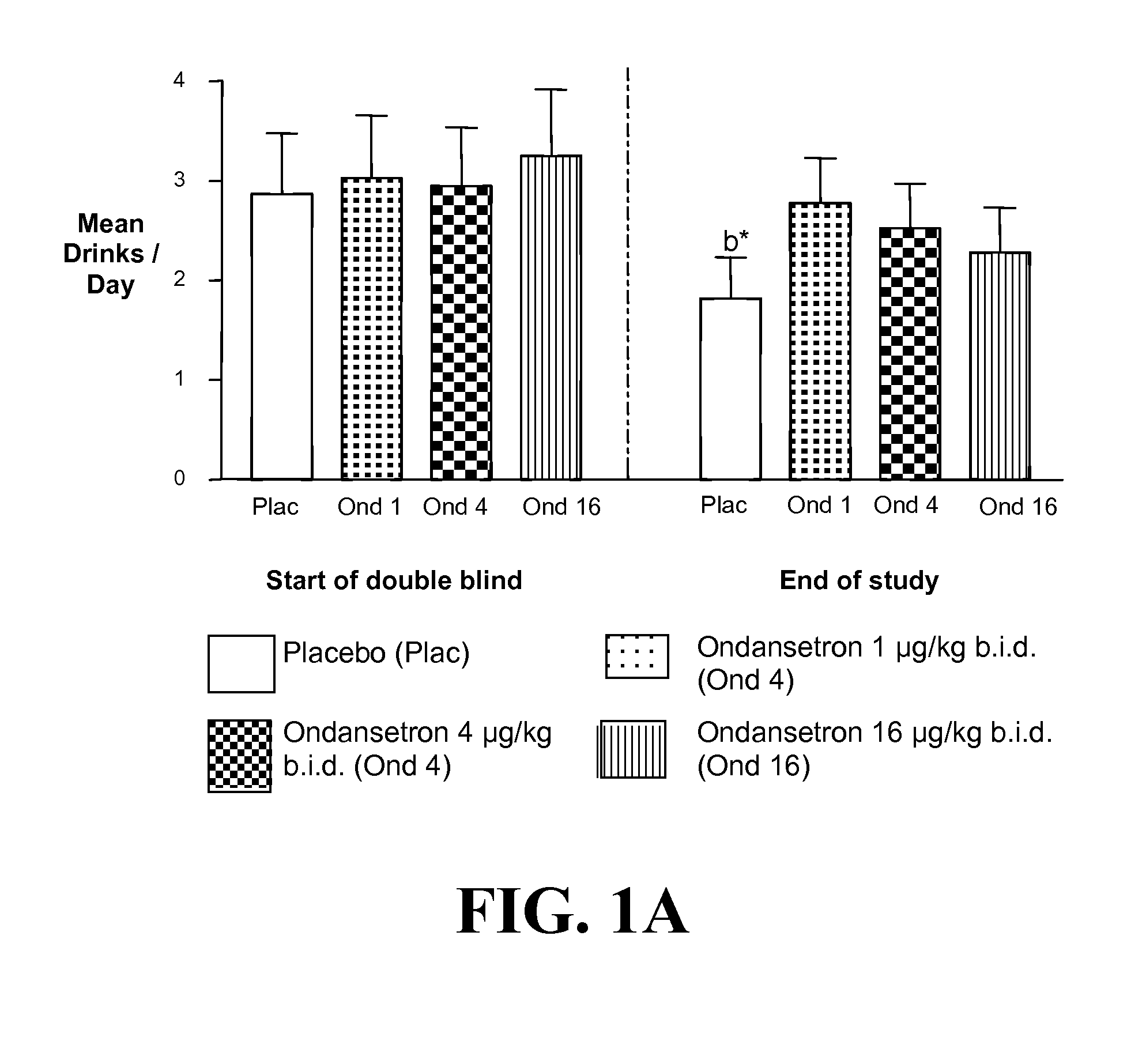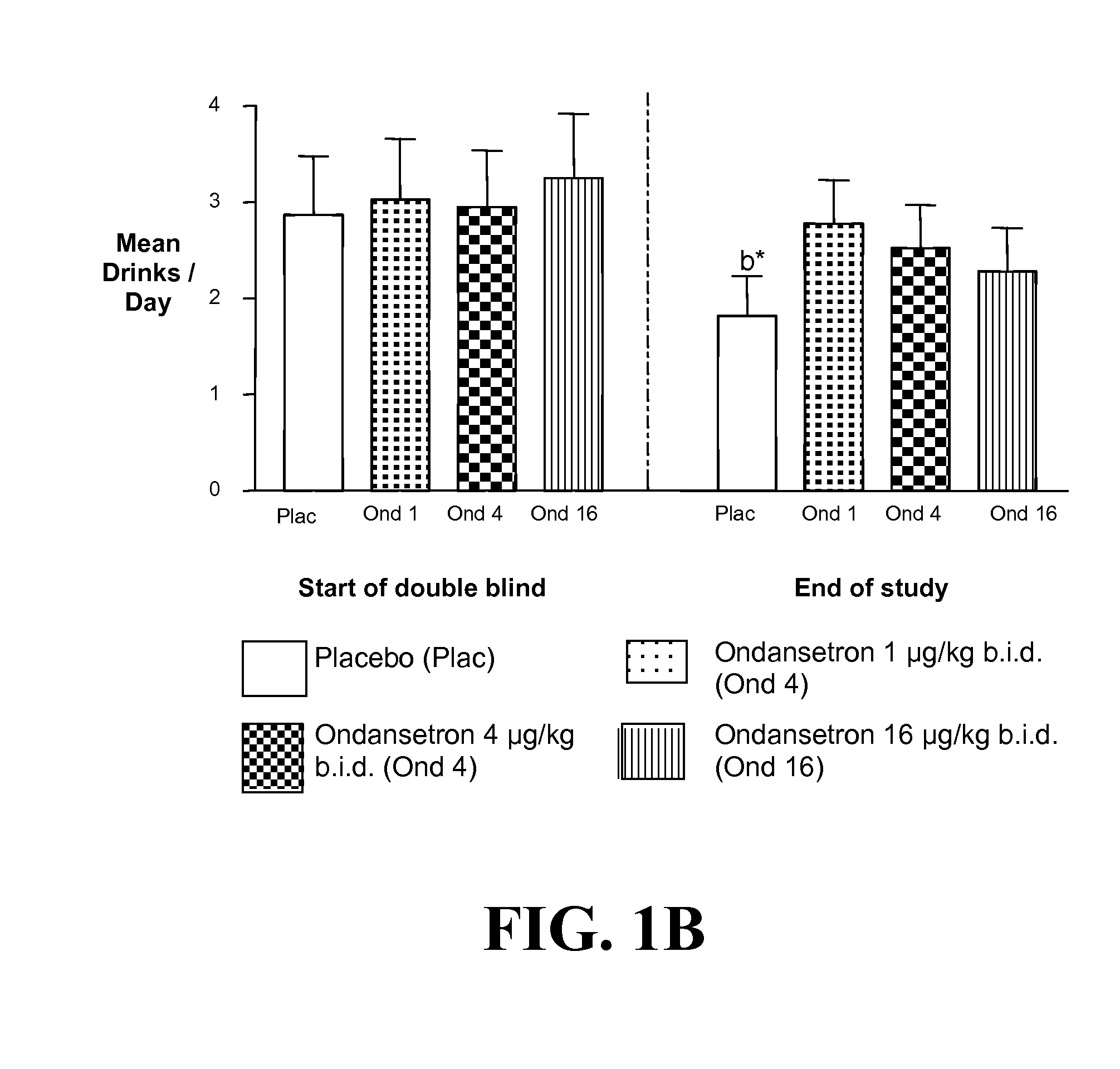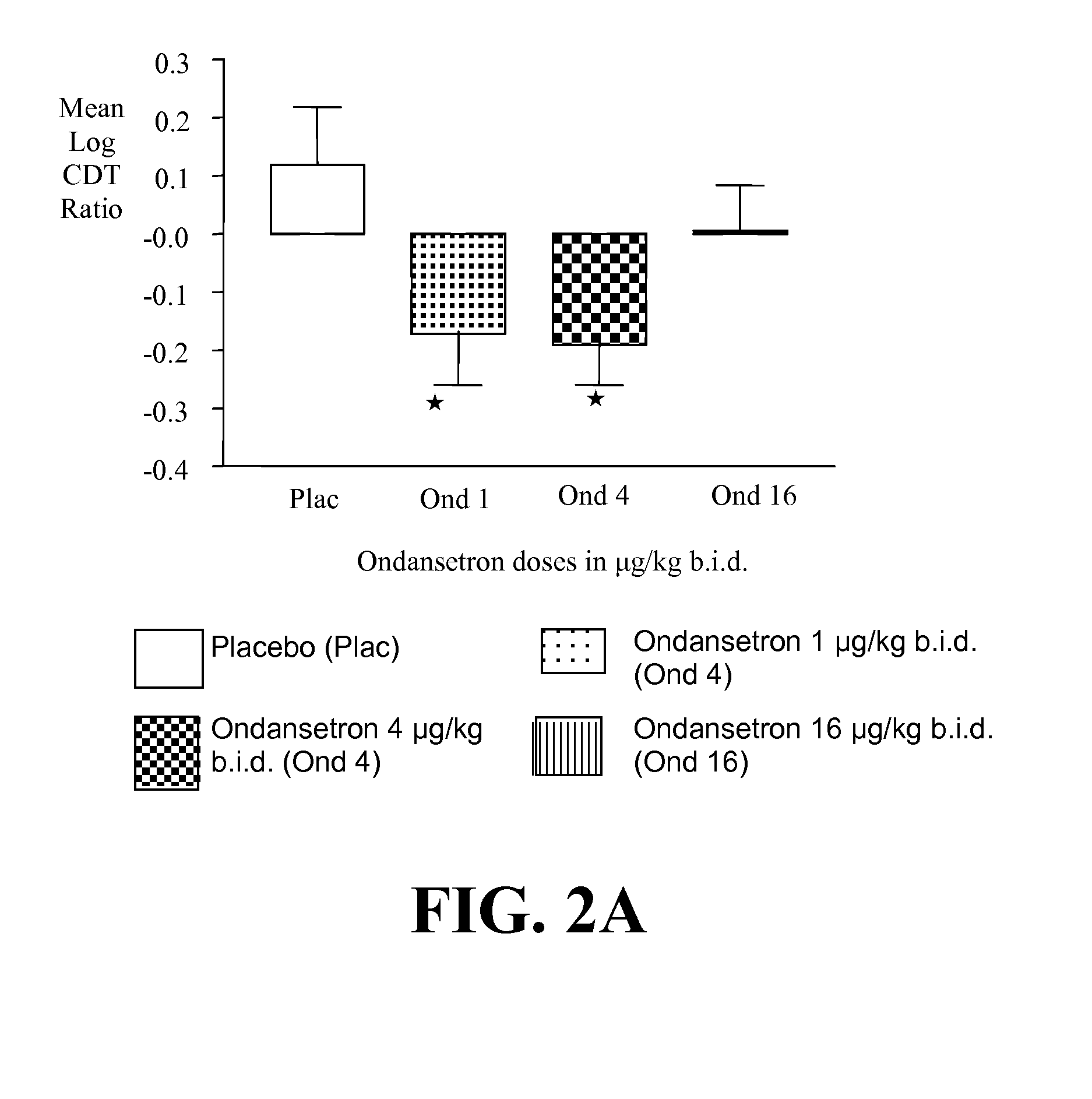Topiramate Plus Naltrexone for the Treatment of Addictive Disorders
a technology of topiramate and naltrexone, applied in the field of combination therapies, can solve the problems of adding up or being synergistic, and achieve the effects of safe and effective treatment of alcohol dependence, modulating the function of cmda, and enhancing the therapeutic response of topirama
- Summary
- Abstract
- Description
- Claims
- Application Information
AI Technical Summary
Benefits of technology
Problems solved by technology
Method used
Image
Examples
embodiments
[0216]The present invention encompasses the use of combinations of drugs or compounds to treat addictive and compulsive diseases and disorders, particular alcohol-related diseases and disorders. The present invention further encompasses the use of adjunctive treatments and therapy such as psychosocial management regimes, hypnosis, and acupuncture.
[0217]In some embodiments, a first compound and a second compound are administered nearly simultaneously. In other embodiments, a first compound is administered prior to the second compound. In yet other embodiments, the first compound is administered subsequent to the second compound. If three or more compounds are administered, one of ordinary skill in the art will appreciate that the three or more compounds can be administered simultaneously or in varying order.
[0218]In certain embodiments disclosed herein, an individual is given a pharmaceutical composition comprising a combination of two or more compounds to treat or prevent an addicti...
example 1
[0399]The studies described herein demonstrate, inter alia: a) ondansetron's effectiveness in the treatment of EOA and LOA; b) that EOA differs from LOA in serotonergic function; c) that age of onset discriminates between subtypes of alcoholic; d) naltrexone's effects on alcohol drinking in non-human primates; e) naltrexone's effects on drinking in humans; f) that the combination of ondansetron and naltrexone is clinically safe and effective in the treatment of EOA; and g) evidence of our expertise with Cognitive Behavioral Therapy as a psychosocial platform for testing the effectiveness of putative therapeutic medications.
[0400]a) Ondansetron is Effective at Improving the Drinking Outcomes of EOA but not LOA
[0401]We tested the hypothesis that the drinking outcomes of EOA, compared with LOA, would be more improved by the selective serotonin3 antagonist, ondansetron. EOA differ from LOA by having greater serotonergic abnormality, an earlier age of onset, and antisocial behaviors. Thu...
example 2
Examination of the Combined Administration of Topiramate and Naltrexone as a Potential Treatment for Alcohol Dependence Using Animal Models
[0424]FIG. 8 demonstrates the combined effect of topiramate (5 and 10 mg / kg, intraperitoneally) and naltrexone (1 mg / kg, intraperitoneally) on alcohol consumption in alcohol-preferring (P) rats. While topiramate alone only modestly decreased alcohol consumption (at the 10-mg / kg dose although this effect is not yet significant), when combined with a dose of naltrexone that did not affect alcohol consumption on its own, significant decreases from baseline were observed on alcohol consumption at both topiramate doses (see FIG. 8). No significant differences were observed following vehicle injection. Data are plotted as change from baseline consumption, and each data point represents a mean (±SE) of 8 rats.
[0425]Model for Neural Control
[0426]The neural control mechanisms described herein are presented schematically in FIG. 9.
[0427]The disclosures of ...
PUM
| Property | Measurement | Unit |
|---|---|---|
| pH | aaaaa | aaaaa |
| w/w | aaaaa | aaaaa |
| temperature | aaaaa | aaaaa |
Abstract
Description
Claims
Application Information
 Login to View More
Login to View More - R&D
- Intellectual Property
- Life Sciences
- Materials
- Tech Scout
- Unparalleled Data Quality
- Higher Quality Content
- 60% Fewer Hallucinations
Browse by: Latest US Patents, China's latest patents, Technical Efficacy Thesaurus, Application Domain, Technology Topic, Popular Technical Reports.
© 2025 PatSnap. All rights reserved.Legal|Privacy policy|Modern Slavery Act Transparency Statement|Sitemap|About US| Contact US: help@patsnap.com



